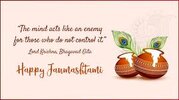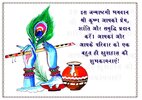You are using an out of date browser. It may not display this or other websites correctly.
You should upgrade or use an alternative browser.
You should upgrade or use an alternative browser.
30th Aug 2021
- Thread starter Deepak Kiran
- Start date
@Enola
This regular national holiday is celebrated on the last Monday in August. It is known in the Philippines as 'Araw ng mga Bayani'.
It is a day to honour the bravery of all Filipino heroes who struggled for the nation's freedom, including those who vanished into anonymity.
Two of these heroes, Andres Bonifacio and Jose Rizal were key figures in the fight for independence from Spain that they also have specific national holidays in their honour.
The date chosen is intended to mark the 'Cry of Pugad Lawin' in August 1896, which was the first act of insurrection against the Spanish colonisers by the Katipunan, a hitherto secret Filipino revolutionary movement. This is seen as the start of the Philippine revolution and movement towards independence.
1996 was declared as the Year of Filipino Heroes to mark the centennial of the revolution against Spain.
National Heroes' Day has been celebrated since 1931 when Act No. 3827 stated it should be observed on the last Sunday of August.
In 2007, President Gloria Macapagal-Arroyo signed Republic Act No. 9492, moving the national holiday to the last Monday of August. The Arroyo administration said that moving the holiday to Monday was in line with the "holiday economics" program and promoted long weekends for citizens to engage with domestic tourism.
The day is marked by parades and the laying of wreaths to honour those who lost their lives in the pursuit of the Philippine nation.
This regular national holiday is celebrated on the last Monday in August. It is known in the Philippines as 'Araw ng mga Bayani'.
It is a day to honour the bravery of all Filipino heroes who struggled for the nation's freedom, including those who vanished into anonymity.
Who are the National Heroes?
In 1995, a year before the centenary of the revolution against Spain, a committee produced the following list of key National Heroes who should be honoured for their contribution to the Philippines:- Jose Rizal,
- Andres Bonifacio,
- Emilio Aguinaldo,
- Apolinario Mabini,
- Marcelo H. del Pilar,
- Sultan Dipatuan Kudarat,
- Juan Luna,
- Melchora Aquino
- Gabriela Silang,
Two of these heroes, Andres Bonifacio and Jose Rizal were key figures in the fight for independence from Spain that they also have specific national holidays in their honour.
The date chosen is intended to mark the 'Cry of Pugad Lawin' in August 1896, which was the first act of insurrection against the Spanish colonisers by the Katipunan, a hitherto secret Filipino revolutionary movement. This is seen as the start of the Philippine revolution and movement towards independence.
1996 was declared as the Year of Filipino Heroes to mark the centennial of the revolution against Spain.
National Heroes' Day has been celebrated since 1931 when Act No. 3827 stated it should be observed on the last Sunday of August.
In 2007, President Gloria Macapagal-Arroyo signed Republic Act No. 9492, moving the national holiday to the last Monday of August. The Arroyo administration said that moving the holiday to Monday was in line with the "holiday economics" program and promoted long weekends for citizens to engage with domestic tourism.
The day is marked by parades and the laying of wreaths to honour those who lost their lives in the pursuit of the Philippine nation.
Krishna Janmashtami, also known simply as Janmashtami or Gokulashtami, is an annual Hindu festival that celebrates the birth of Krishna, the eighth avatar of Vishnu. It is observed according to the Hindu lunisolar calendar, on the eighth day (Ashtami) of the Krishna Paksha (dark fortnight) in Shraavana or Bhadrapada (depending on whether the calendar chooses the new moon or full moon day as the last day of the month), which overlaps with August or September of the Gregorian calendar.
It is an important festival, particularly in the Vaishnavism tradition of Hinduism. Dance-drama enactments of the life of Krishna according to the Bhagavata Purana (such as Rasa Lila or Krishna Lila), devotional singing through the midnight when Krishna was born, fasting (upavasa), a night vigil (Ratri Jagaran), and a festival (Mahotsav) on the following day are a part of the Janmashtami celebrations. It is celebrated particularly in Mathura and Vrindavan, along with major Vaishnava and non-sectarian communities found in Manipur, Assam, Bihar, West Bengal, Odisha, Madhya Pradesh, Rajasthan, Gujarat, Maharashtra, Karnataka, Kerala, Andra Pradesh, Tamil Nadu and all the other states of India.
Krishna Janmashtami is followed by the festival Nandotsav, which celebrates the occasion when Nanda Baba distributed gifts to the community in honor of the birth
Hindus celebrate Janmashtami by fasting, singing, praying together, preparing and sharing special food, night vigils, and visiting Krishna or Vishnu temples. Major Krishna temples organize recitation of ‘'Bhagavata Purana and Bhagavad Gita. Many communities organize dance-drama events called Rasa Lila or Krishna Lila. The tradition of Rasa Lila is particularly popular in the Mathura region, in northeastern states of India such as Manipur and Assam, and in parts of Rajasthan and Gujarat. It is acted out by numerous teams of amateur artists, cheered on by their local communities, and these drama-dance plays begin a few days before each Janmashtami.
It is an important festival, particularly in the Vaishnavism tradition of Hinduism. Dance-drama enactments of the life of Krishna according to the Bhagavata Purana (such as Rasa Lila or Krishna Lila), devotional singing through the midnight when Krishna was born, fasting (upavasa), a night vigil (Ratri Jagaran), and a festival (Mahotsav) on the following day are a part of the Janmashtami celebrations. It is celebrated particularly in Mathura and Vrindavan, along with major Vaishnava and non-sectarian communities found in Manipur, Assam, Bihar, West Bengal, Odisha, Madhya Pradesh, Rajasthan, Gujarat, Maharashtra, Karnataka, Kerala, Andra Pradesh, Tamil Nadu and all the other states of India.
Krishna Janmashtami is followed by the festival Nandotsav, which celebrates the occasion when Nanda Baba distributed gifts to the community in honor of the birth
Hindus celebrate Janmashtami by fasting, singing, praying together, preparing and sharing special food, night vigils, and visiting Krishna or Vishnu temples. Major Krishna temples organize recitation of ‘'Bhagavata Purana and Bhagavad Gita. Many communities organize dance-drama events called Rasa Lila or Krishna Lila. The tradition of Rasa Lila is particularly popular in the Mathura region, in northeastern states of India such as Manipur and Assam, and in parts of Rajasthan and Gujarat. It is acted out by numerous teams of amateur artists, cheered on by their local communities, and these drama-dance plays begin a few days before each Janmashtami.







